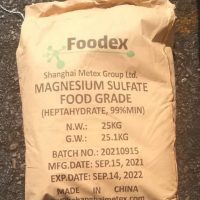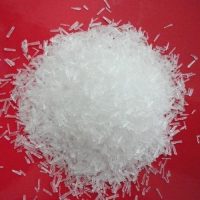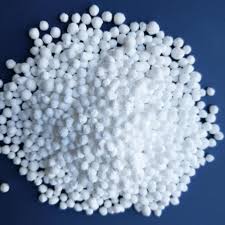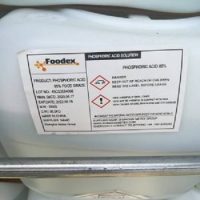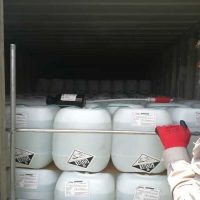Potassium Sorbate
- CAS Number: 24634-61-5
- Appearance: Solid
- Purity:%
- Made in: China
- Phone Num : +86-2150591759
- E-mail: info@shanghaimetex.com
- Description
- analysis
- shipping & delivery
Description
It is a chemical additive that is widely used as a preservative in foods, beverages, and personal care products. Potassium sorbate is a tasteless, odorless chemical made from sorbic acid and potassium hydroxide.

Potassium sorbate is an excellent preservative that increases the shelf life of food by stopping the growth of yeast and fungi. You may have seen its name on the labels of wine, cheese, soft drinks, and baked goods. Due to the problems of using paraben as a preservative, this compound is a suitable alternative for it in the cosmetics industry.
Physical and Chemical Properties:
Potassium sorbate, a compound with the chemical formula C6H7KO2, is produced in the form of white crystal powder or granules, easily soluble in water, and converted to sorbic acid at low PH.
The most important physical and chemical properties of this compound can be summarized in the following table:
| Chemical formula | C6H7KO2 |
| Molar mass (g/mol) | 150.218 |
| Appearance | solid |
| Density (g/cm3 at 25 °C) | 1.363 |
| odor | odorless |
| Taste | tasteless |
| Melting Point (°C) | 270 (518 °F; 543 K) |
| Solubility in water | 58.5 (g/100 mL at 100°C) |
| Solubility | Soluble in ethanol, propylene glycol,
Slightly soluble in acetone, Very slightly soluble in chloroform, corn oil, ether, Insoluble in benzene |
| Color | White |
| Form | crystals or powder |
| Other names | Sorbic acid potassium salt,
Potassium 2,4-hexadienoate |
| Chemical Structure Depiction |  |
Potassium Sorbate PH level:
Its antimicrobial effect is in the wide range of pH from 3.0 to 6.5 and it works better in acidic conditions with a pH of less than 5. In fact, as the pH decreases, its activity increases. However, potassium sorbate is also effective in higher pH ranges, for example, pH 6.5, while sodium benzoate and potassium benzoate almost lose their antimicrobial activity because they are effective only below pH 4.5. However, potassium sorbate will also be ineffective at pH above 7.0.
Potassium Sorbate Production Process:
One of the most common ways to produce potassium sulfate is to neutralize sorbic acid. Commercial production of potassium sorbate is through the chemical synthesis of sorbic acid with potassium hydroxide. Sorbic acid is a prerequisite for the production of potassium sorbate, which is produced in a two-step process through crotonaldehyde and ketone.
Other processes for the production of potassium sorbate include the addition of potassium carbonate to a solution of sorbic acid in a solvent composed of acetone. Heat this mixture to reflux temperature and recover potassium sorbate from this mixture.
Applications and Uses of Potassium Sorbate:
- Potassium sorbate has many uses due to its safety for humans. In fact, it is one of the most harmless and safe chemical compounds that can be used as a preservative.
- Its main use is as a natural preservative in food and beverages.
- Use it as a safe preservative in cosmetics or personal care products.
- In fact, it acts as a wine stabilizer that is not added until the process is complete.

This compound can be safely used as a preservative in animal feed such as for pigs, poultry, cat, and dog food.
Application of Potassium Sorbate in Food:
Potassium sorbate as an additive preservative does not change the quality of food such as color, taste, and appearance and is also known as a popular additive due to its high solubility in water; Therefore, it can be said that potassium sorbate is present in many food products.
This compound is not harmful to the human body and is eliminated from the body without any adverse effects. As mentioned, potassium sorbate, due to preventing the growth of fungi and yeasts, makes the products more durable but has little effect on bacteria, so it is better to use other preservatives along with potassium sorbate; Potassium sorbate is often used with sodium benzoate. It is said that the maximum daily intake of potassium sorbate is 25 mg per kilogram of human weight.
Potassium Sorbate in Cosmetics:
It is used as a preservative in cosmetics and personal care products. It is a mild preservative that increases shelf life by inhibiting yeasts and molds, and can also replace parabens. Common cosmetics included:
- Sunscreen;
- Moisturizers;
- worms;
- Shampoos;
- Skin and hair care products.

Safety Information:
In its raw form, it irritates the skin, eyes, and respiratory tract. Concentrations of up to 0.5% have little effect on the skin. As an additive to food, this substance is used in a concentration of 0.025% to 0.1%. In the United States, concentrations greater than 0.1% may not be used in food.
But regulators such as the Food and Agriculture Organization of the United Nations (FDA) and the European Food (EFSA) Safety Authority consider potassium sorbate generally safe.
Packing and Storage:
Store in cool, dry conditions in well-sealed receptacles. Protect from exposure to the light.
analysis




